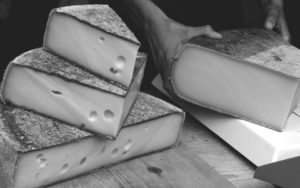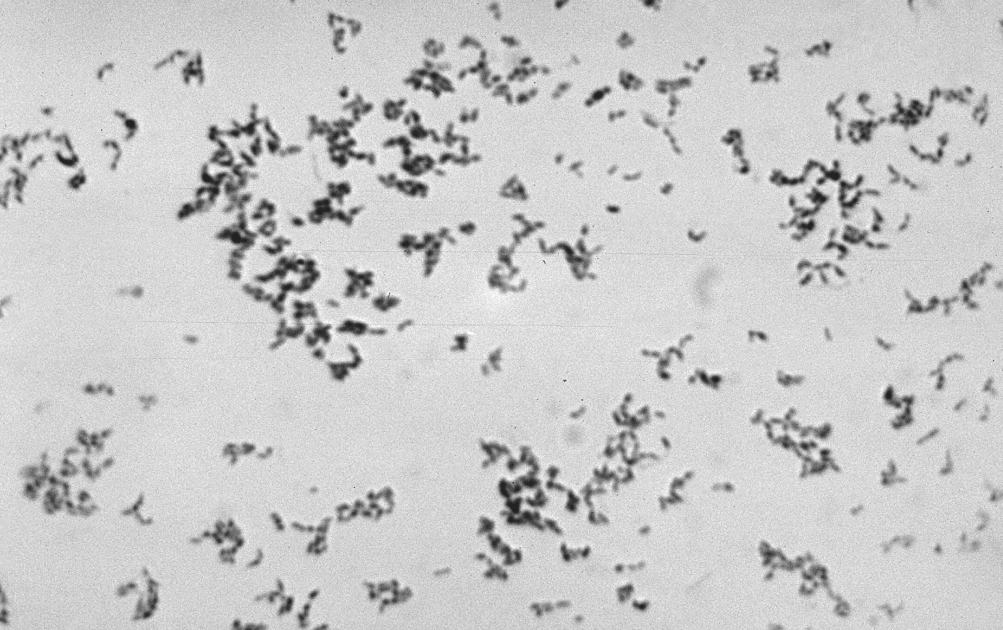We talked to Dr. Gottfried Dasen to get under the skin (pun intended) of his role as a lecturer of molecular biology and microbiology and co-founder, and CEO, of the Culture Collection of Switzerland (CCOS), and to pick his brains on the field of the skin microbiome.
When did you first start working in the field of the skin microbiome?

Image: Ben Sutherland
Well, there were a few years of work in the wider field of the microbiome prior to my current focus on the skin. In fact, I started studying food sciences in Zurich at the Swiss Federal Institute of Technology (ETH), becoming a food engineer, with a master’s degree in food sciences. There, I continued as a researcher in microbiology and completed my PhD. I was working with the bacteria in cheese – Swiss cheese in fact.
The bacteria in the cheese was Propionibacterium and during my thesis, I learned that this type of bacteria is not only in cheese but also involved in acne and other ‘diseases’. Of course, this isn’t the same species, but this was actually the first time I’d been in contact with some of the organisms of the skin microbiome.
From there, my work in molecular biology led me to question how you can detect bacteria with molecular methods, and differentiate between bacteria too. The quest was to discover a method that would you allow to see all of the bacteria present on a sample – which was impossible at the time.
“I was working with the bacteria
in cheese – Swiss cheese in fact.”
It was around four years ago that I became really involved in microbiomes, although this began with the plant microbiome. I was working on a project with a pharmaceutical company to analyse the presence of microorganisms in plant fermentation. The company wanted to investigate the claim of “natural fermentation” and the hypothesis they had around the presence of certain bacteria. Let’s just say the results were definitely not what they anticipated!
From here, the focus on the skin microbiome was partly driven by the saturation of research in the intestinal microbiome. A number of us realised that there was an abundance of interest in the skin microbiome from the cosmetic industry, which at the time had little research published.
What do you see as the main challenges for research in the field?
The first challenge I’ve come across is how to assess the skin microbiome. When I first started my research I looked into literature to find out what was already known on the skin microbiome, such as what bacteria is on the skin, what is the population of the bacteria, where are these located? Astonishingly, this information is still quite rare. It can also be difficult to understand what research methods were used – swabs, biopsies etc.
Within this, one of the challenges faced is how to extract a diverse sample of the microbiome and then to be able to isolate certain microorganisms within this. So, my work focuses on sampling methods for skin microbiome. We are still trying to establish standardized sampling techniques that move beyond the previously accepted, and broader, scientific standards. For example, is it best to contaminate a surface so it behaves like skin? Or is artificial skin better? How deep should the analysis of the skin go? Is it just the top layer, or should we sample bacteria from a range of depths? Are techniques used for the gut microbiome applicable? These are all open questions we are investigating.
“But, the skin microbiome is not static. The dynamism that creates the possibilities also creates the challenges.”
We also realised that in some points of the body, let’s say the face, there are not that many bacteria – perhaps 1,000 per cm². So, if you’re working with such a low abundance of microorganisms, including bacteria, it’s even more critical to have the best sampling technique.
On another note, if you want to know what healthy skin is, most publications are not on healthy skin but focus on damaged or diseased skin. So, it’s quite difficult to stake a clear field for comparison.
These questions are what makes the field interesting – there are a lot of questions to answer and the field is still quite open, which makes it even more interesting.
And where do you see the research on skin microbiome going?
A lot of the research is currently focused on how to influence the skin microbiome. The race is to uncover whether we can change this positively for an individual – this may go beyond changing the formulation of products, to actually changing the microbiome.
I think, of course, one of the influences on the skin microbiome is the application of cosmetics: Is it changing? Is it stable? Are parts of the microbiome reacting or not? Can we add bacteria to create a positive change, like preventing sun-damage?
Another branch is the influencer of pathogens on the skin and the medical application of the skin microbiome.
But, the skin microbiome is not static. It changes, interacts with the elements and reacts to the environment. Because of this, it can be challenging to identify and isolate the one microorganisms that result in a change. The dynamism that creates the possibilities also creates the challenges.
Finally, when you’re not in the lab or at one of your many professional roles, what do you spend your time doing?
I enjoy cooking – let’s say I wouldn’t have studied food sciences if I didn’t like eating or cooking. I still love it after my studies although there are now some things I wouldn’t eat unless I’ve prepared it myself! I also love to read and actually do microscopy based art as a hobby.
For similar content, visit the Content Hub

